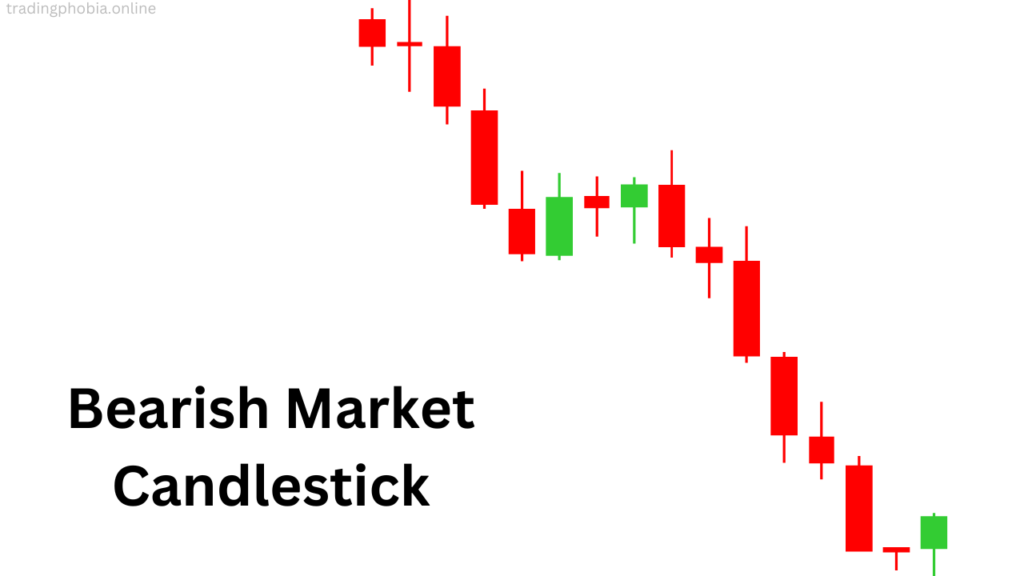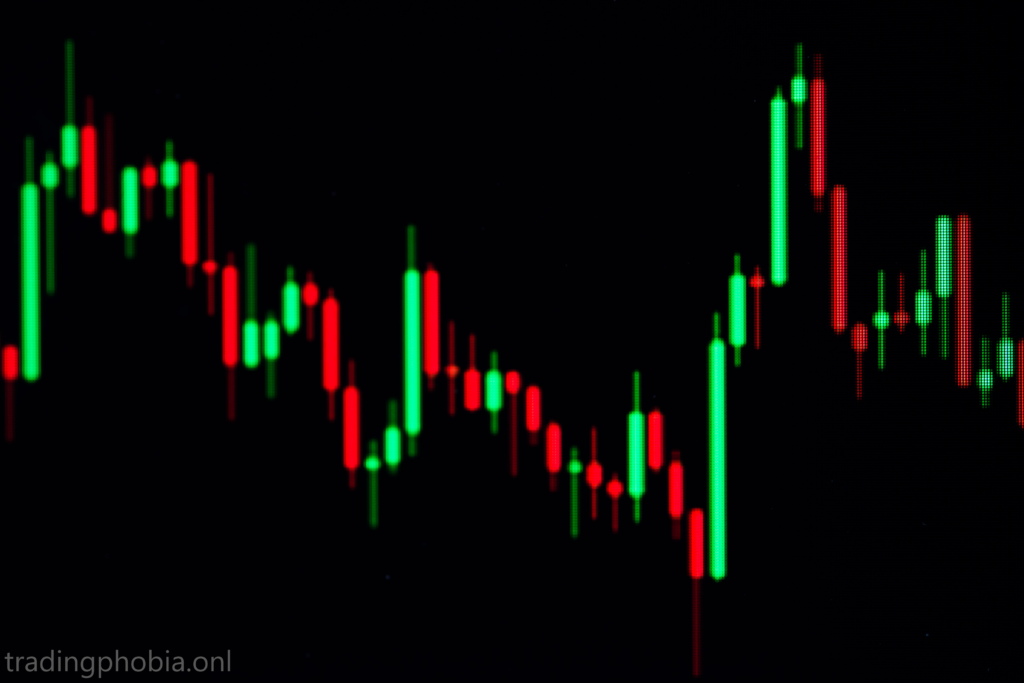Bullish and bearish are common phrases used in financial markets to characterize the direction and attitude of stocks, currency, commodities, and cryptocurrencies.
Understanding the distinction between bullish and bearish trends is critical for traders and investors seeking to navigate market volatility successfully.
In this post, we’ll look at the main differences between these two market trends and how they affect trading techniques.
Table of Contents
What is a bullish market?
A bullish market is one in which financial asset prices are either growing or predicted to be rising over time. Confident and hopeful about potential price rises, investors in a bullish market drive more purchase activity.
Strong economic growth, low unemployment rates, increasing company earnings, and favourable investor attitude all help to drive this hope. Demand for stocks, cryptocurrency, or other assets rises when the market is optimistic, therefore raising the prices.

Buying and keeping assets, traders and investors leverage this trend, hoping for more price increase. Businesses and firms operate well in a bullish market, which drives increased stock prices and more investor returns.
Depending on market mood and economic situation, a persistent bull market might last months or even years. Bull market investors concentrate on sectors projected to beat the whole market, high-yield investments, and growth stocks.
The general attitude is still favourable, and even during brief declines, investors think the market will bounce back and keep rising. Bull markets also bring speculative trading when traders try to profit on momentum and rising price trends. Many technical indicators, such as trend lines and moving averages, point to ongoing upward momentum, therefore motivating greater involvement.
The characteristics of a bullish market
- Rising asset values for a sustained period
- High investor confidence and positive market sentiment
- Increased buying pressure and trading volume.
- Positive economic indicators include GDP growth and low unemployment rates.
- Companies declare good profitability and positive future outlooks.
Examples of Bullish Markets
- Following the financial crisis of 2008, the U.S. stock market entered a long-term positive phase when the S&P 500 rose gradually under economic recovery, low interest rates, and solid corporate earnings.
- Rising institutional acceptance and expanding interest in cryptocurrencies drove Bitcoin from about $10,000 in mid-2020 to an all-time high of almost $69,000 in 2021.
- Companies like Apple, Amazon, and Tesla have witnessed protracted positive trends powered by innovation, robust earnings, and market leadership in tech stock growth.
- Gold Price Surge (2008–2011): Seeking a safe-haven asset, investors drove gold prices from roughly $800 per ounce to over $1,900, therefore fostering a positive trend in the prices during the financial crisis.
- Strong economic development, more foreign investments, and higher corporate earnings have driven India’s stock market—which is currently in a bullish trend—into this direction.
Pros and Cons of a Bullish Market
Pros
- Rising asset prices cause investors to see their portfolios expand.
- Stronger Economy: A good market usually fits low unemployment, business development, and economic expansion.
- Companies can raise money through IPOs or stock issuing, so promoting more business growth by easier access to capital.
- Long-term traders and investors gain from growing asset values in wealth creation.
- Positive Market Sentiment: More involvement brought about by optimism increases demand and liquidity.
Cons
- Overvaluation of stocks and assets could cause possible market bubbles.
Market corrections—that is, unexpected collapses or corrections—may wipe out long-standing optimistic runs.
New investors could find it costly to join the market as prices rise.
In trading, overconfidence can cause investors to overlook hazards, hence guiding their illogical decisions.
Excessive economic growth runs the danger of inflation, which would raise interest rates.
What is a bearish market?
A bearish market is one in which financial asset prices are decreasing over a protracted time. Investor confidence is low in a negative market, and general pessimism about the future performance of the market exists. Negative economic indicators, such as growing unemployment, diminishing business profits, and economic recession, help to foster a negative attitude.
Investors sometimes sell off their holdings as prices drop in order to reduce losses, therefore driving further selling pressure and more drops. More risk-averse, market players choose safer investments like Treasuries or gold over erratic assets like stocks and cryptocurrency.
Changes in monetary policies, geopolitical concerns, and economic downturns are among the several events that could set off bear markets. To guard their portfolios from more losses, many traders use defensive approaches, including hedging methods or short selling.

Panic selling brought on by the anxiety of more decreases causes more quick price drops. Usually, market volatility is significant; hence, trading becomes more difficult with erratic changes. Even powerful businesses see their stock values drop while general market mood is still unfavourable.
Expecting eventual recovery, some investors see bear markets as a chance to acquire underpriced assets at reduced rates. Still, the general trend is down, hence the market might not bounce back for months or years.
Features of a bearish market
- Declining asset values over a protracted period
- Negative sentiment and poor investor confidence
- lowered trading volume and higher selling pressure
- Negative economic markers like high unemployment and falling GDP
- Businesses displaying poor financial performance and smaller earnings
Example of a bearish market
- One of the greatest bear markets in history, the Great Depression (1929–1939), saw stock prices fall by almost 90%, sparking widespread unemployment and economic upheaval.
- Overpriced tech stocks fell, wiping off trillions in market value when investors came to see many internet startups were unsuccessful in 2000–2002.
- Triggered by the collapse of the U.S. housing market, the stock market dropped significantly; in a few months, the Dow Jones dropped more than half of its value.
- March 2020: COVID-19 Market Crash Panic selling brought forth by the epidemic drove down world markets before they started to recover later in the year.
- Following the Bitcoin spike in 2021, the crypto sector underwent a gloomy phase as several crypto companies collapsed and Bitcoin dropped below $20,000.
Pros and Cons of a Bearish Market
Pros
- Long-term investors have an opportunity to purchase underpriced assets at discounted rates.
- Short-selling techniques let traders profit from falling prices.
- Correcting Markets Bear markets help reduce too much speculation and steady valuations.
- Weak companies fail while strong companies adjust, therefore improving the state of the market.
Slower economic expansion can help to lower inflationary pressures.
Cons
- Investment losses: As asset values drop, portfolio decreases, and panic and financial hardship result.
- Bearish markets frequently align with recessions, job losses, and lower consumer spending.
- Reduced investor confidence might result in extended selling pressure from fear and uncertainty.
- Low demand could make it difficult for investors to sell assets at intended values.
- Many investors panic in weak markets and act emotionally, which aggravates losses.
Differences Between Bullish and Bearish Markets
| Aspect | Bullish Market | Bearish Market |
| Price Movement | Prices are rising | Prices are falling |
| Investor Sentiment | Optimistic and confident | Pessimistic and fearful |
| Market Behavior | Increased buying pressure | Increased selling pressure |
| Economic Indicators | Strong economic growth | Economic slowdown or recession |
| Trading Strategies | Buying (going long) | Selling (going short) |
How Traders React To Bullish and Bearish Markets
In a bullish market, traders and investors prefer to buy and hold assets, expecting price increases over time. Many investors prefer growth stocks, ETFs, and high-yield assets.
In a bearish market, traders may employ tactics such as short selling, options trading, or hedging to protect their capital. Some investors move their capital to safer assets such as bonds and gold.
How do you know if its bearish or bullish?
Analysing many elements—including price swings, investor attitude, and economic data—helps one ascertain if a market is bullish or bearish. These are some main approaches to spot market trends:
Indices of a Bullish Market
- Rising Prices: The market is positive if asset prices—stocks, cryptocurrencies, and goods—are regularly rising over time.
- Higher Highs & Higher Lows: Price charts exhibit an increasing tendency with higher peaks and lower lows.
- Strong Economic Indicators: Positive GDP growth, low unemployment, and increasing company earnings point to a hopeful market.
- Increased Trading Volume: Rising trading volume of more investors purchasing drives prices higher.
- Positive Investor Sentiment: results from market optimism and confidence in assets increasing demand.

Indices of a Bearish Market
- Declining Prices: Should asset values be regularly declining over time, the market is bearish.
- Lower Highs & Lower Lows: Price charts exhibit a declining trend with lower peaks and lower lows.
- Weak Economic Indicators: Declining GDP, high unemployment, and weak company earnings point to a negative market.
- Increased Selling Pressure: Investors panic and sell their assets, therefore lowering the values even more.
- Negative Investor Sentiment: Mostly driven by fear and pessimism, demand for riskier investments declines.
Technical Significance to Spot Trends
Moving averages (MA) show a bullish trend if the short-term moving average—say, 50-day MA—is higher than the long-term moving average—say, 200-day MA; the reverse shows a negative trend.
An overbought market (bullish) is indicated by an RSI above 70; an oversold market (bearish) by an RSI below 30.
A bullish crossover (the MACD line passing above the signal line) implies a positive trend; a bearish crossover indicates a decline.
Difference Between Bullish & Bearish Conclusion
Any trader or investor navigating financial markets must have a basic understanding of the distinction between bullish and bearish markets. Both market circumstances present distinct risks and possibilities, and understanding their traits, indicators, and ramifications can aid in making wise investing choices.
A bull market is a reflection of optimism, confidence, and economic expansion. Rising asset values for investors result in wealth accumulation and more trading activity. Businesses prosper as they raise money, and the market is still overwhelmingly optimistic.
Unbridled enthusiasm, however, can result in market bubbles, overvaluation, and possible corrections. When the market changes, investors who don’t take these risks into consideration could lose money.
Conversely, a bearish market is typified by economic downturns, pessimism, and dropping prices. Sharp drops in asset values result from investors selling out of fear, often unreasonably.
Even though bearish markets can be difficult, they also present long-term investors with excellent chances to purchase assets at a discount. Short-selling and other hedging techniques can also be profitable for experienced traders. However, many people find bearish markets challenging due to economic recessions, job losses, and decreased consumer confidence.
It is essential to understand how to recognise bullish and bearish patterns. Market direction is influenced by a number of factors, including price movement patterns, technical indicators such as RSI and moving averages,
economic indicators, and investor sentiment. Bearish markets necessitate defensive tactics like stop-loss orders, diversification, and patience, whilst bullish markets promote buying and holding methods.
The financial cycle requires both market stages. Markets would become unsupportably overpriced in the absence of bearish tendencies, and investors would be left without growth prospects in the absence of bullish trends.
Since neither market state lasts forever, successful traders and investors modify their strategy accordingly. Long-term trading and investing success is ultimately determined by one’s capacity to manage these cycles, whether by preserving investments during bad trends or taking advantage of bullish ones.
Traders can create a well-rounded strategy that allows them to make money in bullish markets and endure in negative ones by grasping these ideas. Education, risk management, and emotional control are the keys to success. Knowing market trends is essential for making better-informed, calculated decisions, regardless of your trading style—day, swing, or long-term.
Do you want your article to be improved or added to in any way?


